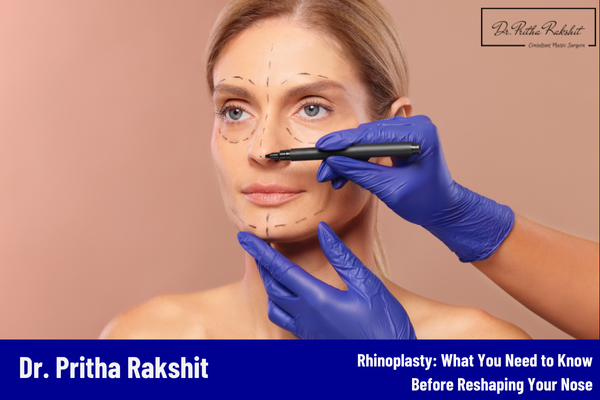Rhinoplasty, commonly referred to as a “nose job,” is a popular cosmetic surgery designed to enhance the appearance or function of the nose. Whether you’re considering rhinoplasty for aesthetic reasons or to correct breathing issues, understanding the procedure and its implications is crucial. Dr. Pritha Rakshit, a renowned plastic surgeon in Kolkata, explains the key aspects of rhinoplasty, from preparation to recovery.
Why Consider Rhinoplasty?
Rhinoplasty is often pursued for two primary reasons:
- Cosmetic Purposes: Many individuals opt for rhinoplasty to alter the size, shape, or symmetry of their nose, improving facial harmony.
- Medical Reasons: Some undergo rhinoplasty to correct structural issues like a deviated septum, which can cause breathing difficulties or chronic sinus problems.
Types of Rhinoplasty
There are two main types of rhinoplasty based on the surgical approach:
- Closed Rhinoplasty: In this method, incisions are made inside the nostrils, leaving no visible scars. It’s suitable for minor reshaping.
- Open Rhinoplasty: This technique involves an incision across the columella (the tissue between the nostrils). It provides better access for more extensive reshaping and corrections.
How to Prepare for Rhinoplasty
Before undergoing rhinoplasty, it’s important to consult with a skilled plastic surgeon like Dr. Pritha Rakshit, who will assess your facial structure and discuss your goals. Preparation tips include:
- Medical Evaluation: Your surgeon will evaluate your health, discuss any pre-existing conditions, and examine your nose structure to determine the best approach.
- Setting Realistic Expectations: It’s important to have a clear understanding of the potential outcomes and limitations of the surgery.
- Avoiding Certain Medications: Blood-thinning medications like aspirin should be avoided before surgery, as they can increase the risk of bleeding.
What Happens During Rhinoplasty
Rhinoplasty is typically performed under general anesthesia, and the surgery can take 1-3 hours depending on the complexity of the procedure. During the surgery, the nasal bones and cartilage are reshaped, or tissue is added or removed to achieve the desired result.
Recovery Process
The recovery period after rhinoplasty varies by individual, but here are some general steps to follow:
- Initial Healing: Expect swelling and bruising, particularly around the eyes, for the first week after surgery. A splint may be placed to protect your nose.
- Follow Post-Operative Instructions: Your surgeon will provide detailed guidelines on caring for the surgical area, including keeping your head elevated and avoiding strenuous activities.
- Gradual Results: Swelling will gradually subside over several weeks, but the final results of rhinoplasty may take up to a year to fully manifest.
Risks and Considerations
Like any surgical procedure, rhinoplasty carries certain risks, including infection, scarring, or dissatisfaction with the final appearance. Choosing an experienced plastic surgeon like Dr. Pritha Rakshit minimizes these risks and ensures a high-quality outcome.
Conclusion
Rhinoplasty is a highly effective procedure for enhancing both the aesthetic and functional aspects of the nose. If you’re considering reshaping your nose, it’s essential to consult a skilled and experienced plastic surgeon like Dr. Pritha Rakshit, who can help guide you through the process, ensuring the best possible results.

